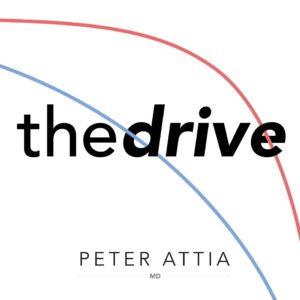
In this episode of “The Peter Attia Drive” podcast, Peter Attia discusses the confusion surrounding HDL (high-density lipoprotein) and its link to cardiovascular disease with Dr. Dan Rader. They delve into the biology, origin, metabolism, and function of HDL, debunking common misconceptions and shedding light on the complexities of this lipoprotein. They also explore the role of HDL in atherosclerosis and the potential for HDL-based therapies.
HDLs, often referred to as “good cholesterol,” are complex lipoproteins involved in the transport of lipids in the blood. They are composed of various proteins, including APOA1, and play a crucial role in cholesterol metabolism. HDL particles are formed when APOA1 is released into the blood by either the intestine or the liver. ABCA1, a transport protein, helps HDL acquire lipids, particularly phospholipids and cholesterol. However, the exact biology and function of HDLs are still not fully understood.
Contrary to popular belief, having high HDL does not guarantee protection against cardiovascular disease. Manipulating the ApoB side of the equation, which primarily transports triglycerides and is directly linked to cardiovascular disease, has been more successful in treating atherosclerosis. HDL particles are smaller and denser than LDL particles and have less lipid. Standard lipid panels provide limited information and do not account for the complexity of HDL metabolism. Despite efforts to develop drugs to raise HDL cholesterol levels, their effectiveness in reducing cardiovascular events has been limited.
Measuring HDL functionality is crucial for assessing cardiovascular risk and targeting appropriate therapies. Clinical assays for measuring HDL function are currently under development and may be available in the next few years. HDL function, such as cholesterol efflux capacity, has been shown to be a predictor of incident cardiovascular events. The directional flux of cholesterol in the blood is more from HDL to APOB-containing lipoproteins, highlighting the importance of understanding the e-flux process. Composite metrics of biomarkers may provide better predictions of HDL function than measuring it directly. HDL cholesterol levels reflect 24-hour triglyceride metabolism better than fasting triglyceride measurements.
While HDL has been traditionally labeled as “good cholesterol,” its biology and function are much more complex than commonly believed. High HDL levels do not guarantee protection against cardiovascular disease, and manipulating the ApoB side of lipid metabolism has shown more success in treating atherosclerosis. The development of clinical assays to measure HDL function may provide better risk predictions and guide targeted therapies. Further research is needed to fully understand the complexities of HDL and its role in cardiovascular health.